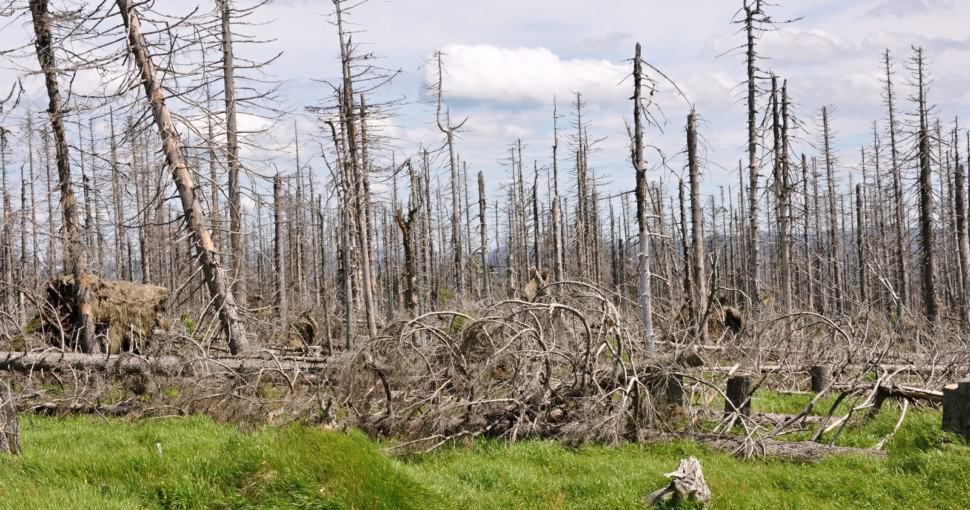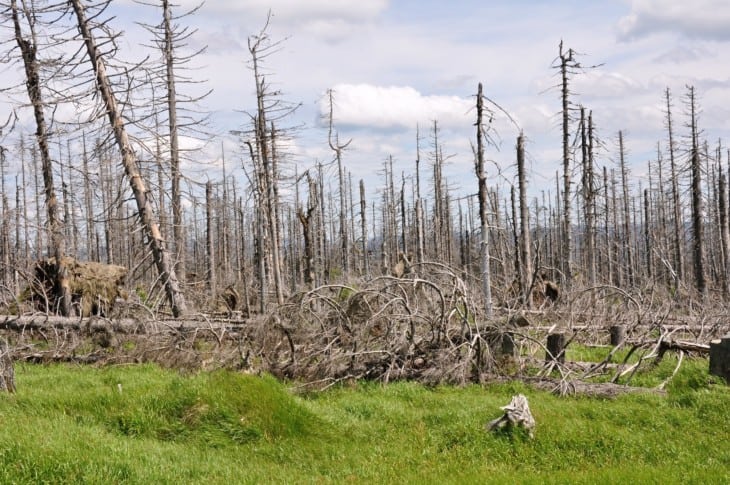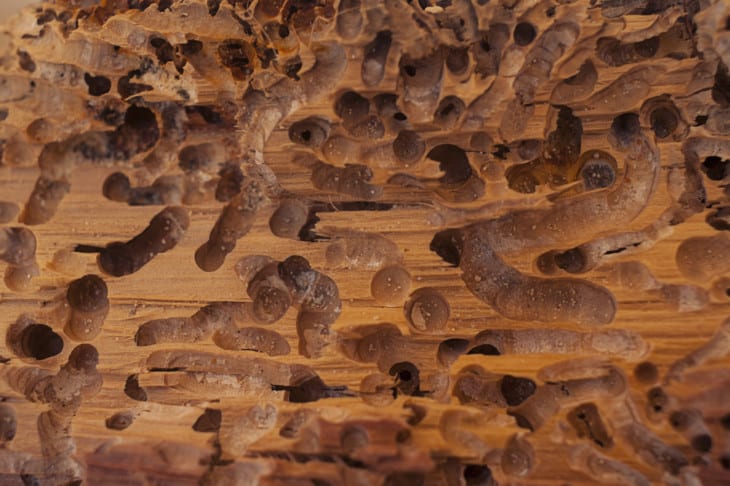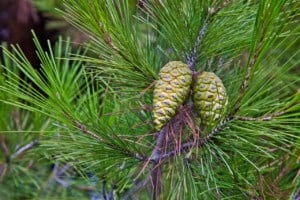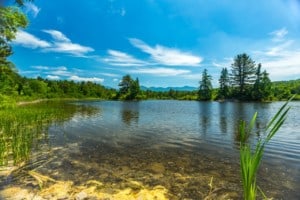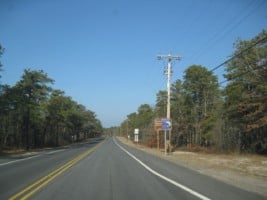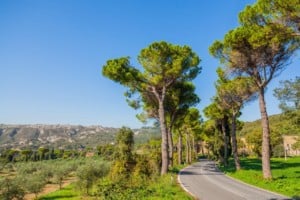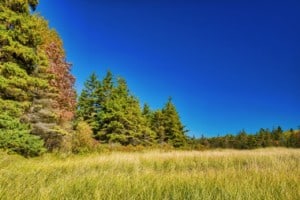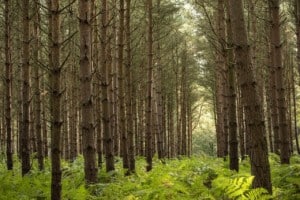Whether someone is flying above the ground or wants some shade, pine trees are beautiful and stand tall. Aviators know that they can be dangerous to fly into, but what else might kill a pine tree? It’s important to find out to be more aware of the dangers to pine trees.
Most people don’t think it’s easy to kill a pine tree because they can withstand harsh conditions. However, many diseases can kill a pine tree, as well as insects. Let’s learn more!
Related: Pine Tree Diseases
1. Pine Wilt Disease
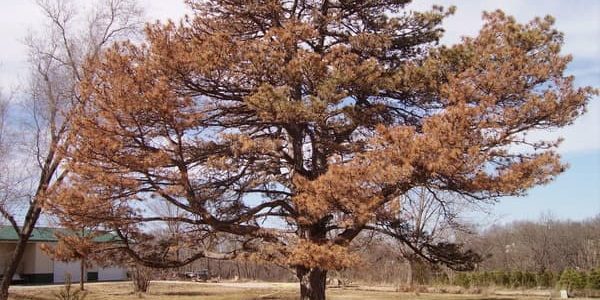
Nature can be very mean, and pine wilt disease is a leading cause of pine tree death. It’s caused by a nematode called Bursaphelenchus xylophilus. This nematode is native to North America and is transmitted by the pine sawyer beetle.
When it’s introduced to the host tree, the nematodes spread quickly throughout the resin canal system. This disrupts the tree’s ability to bring in water. The needles wilt and ultimately turn brown because there’s no moisture.
Though the infected trees can live a few years, most of them die in months. Infected trees should be burned or chipped and removed to avoid the spread of the disease.
2. Pitch Canker Disease
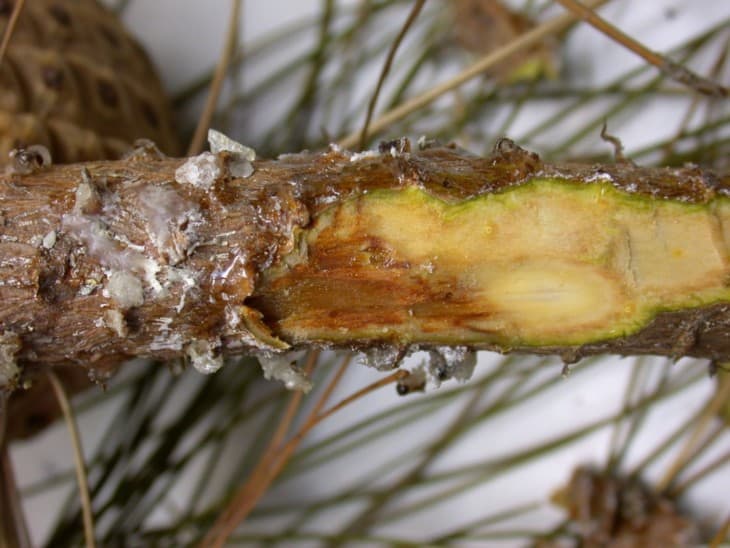
If the tree develops Pitch Canker Disease, it means that there’s a fungus growing there. It affects various types of pine trees, but the Bishop and Monterey ones are most susceptible. This fungus is transmitted primarily through flying insects.
Typically, pitch canker is found in the southeastern part of the US and along the California coast. With it, the needles ultimately drop, so the branches are exposed.
If a tree has pitch canker, resin is sure to ooze along the branches, and there might be boles or lesions on the trunk. With time, the infection kills the crown, which weakens the tree. That means other diseases and insects can feast.
There’s no treatment for this disease. However, trees might be able to recover from the infection after many years.
3. Needle Blight
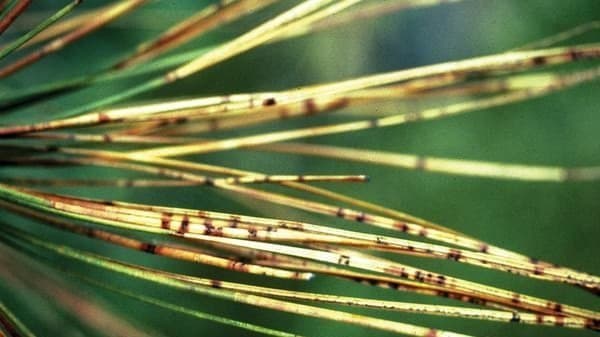
Needle blight is caused primarily by a fungus called Dothistroma pini. It affects various pine tree types, such as Lodgepole, Monterey, and Ponderosa. The fungus causes the needles to die, making them fall from the tree.
Needles develop green bands on them that turn red or brown. Then, the needle tips go light yellow, but eventually, the whole needle goes brown and falls off.
Infections usually appear on the tree’s lower branches first. If left untreated, the disease could spread throughout, which causes death within a few short years. Copper fungicides can be applied a few times a year to control the disease effectively.
4. Bark Beetles
forest destroyed by bark beetle Old wood eaten by bark beetle background
Bark beetles are well known for attacking pine trees. They bore into the inner bark of the trunk and branches. Often, the beetles just injure or weaken the trees, which makes them susceptible to other diseases. However, some beetles can actually kill pine trees.
If a tree is already weakened by drought or something else, they’re even more vulnerable to a beetle attack. Once a tree is infested, pesticides aren’t likely to be successful in controlling the bark beetle.
Ultimately, the best method of preventing such infestations is to keep the tree healthy and watered. Repair injuries as they happen.
5. Chemicals
Sometimes, trees are in the way, become too overgrown, or become diseased. When that happens, it might be best to use chemicals to completely kill the pine tree. That way, it can be removed so that the rest of them don’t get sick.
It’s often hard to kill a mature pine tree. Burning and banding are two primary methods, but chemical treatments could be the right choice. The only issue is that some of the chemicals kill everything they touch. Therefore, it’s essential not to poison everything else around the tree.
Use chemical-free products in your yard and lawn, such as organic lawn insect killer.
Wind drifts and soil contamination can cause problems for future plants.
Many chemicals can kill a pine tree. These include:
- Glysophate – Any chemical mixture that contains glysophate can kill pine trees. It primarily enters through the foliar structure, allowing the herbicide to hit the needles and penetrate into the root system.
- Metsulfuron – Many industrial herbicides contain metsulfuron as an active ingredient. However, it’s primarily used in the UK and not in the US.
- Nitrogen Fertilizer – Those who want something less toxic might prefer nitrogen fertilizer. However, it takes a while to work and requires that holes be drilled around the trunk.

